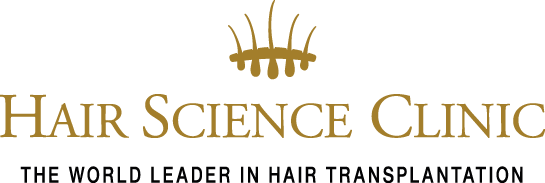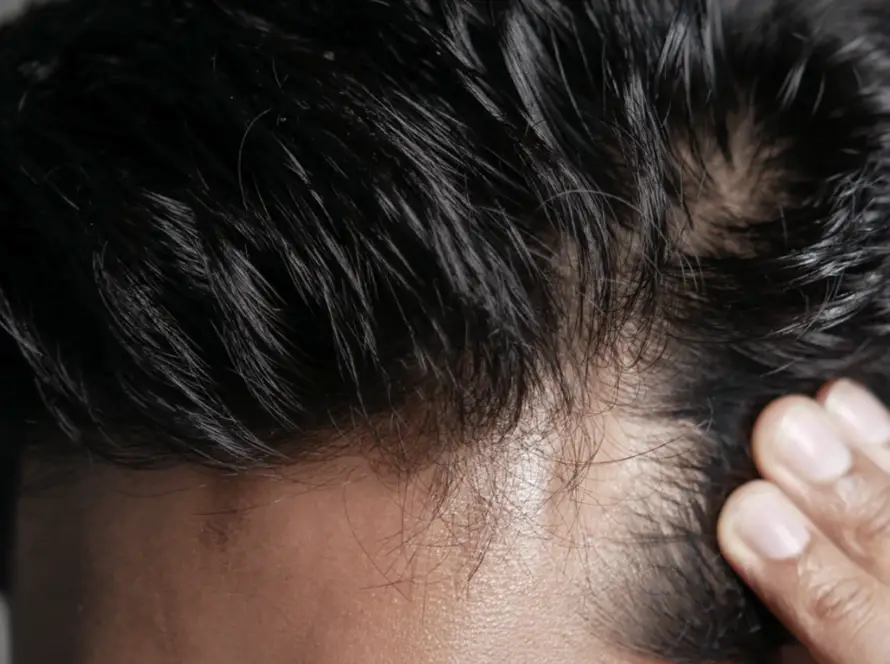Hair transplantation involves moving hair follicles from areas with healthy hair growth to the balding area. This technique can be used in several areas. For example, at the crown, inlets and hairline, areas where men usually experience hair loss first. The most sophisticated form of hair transplantation – Hair Stem-cell Transplantation (HST) – is even so sophisticated that eyebrows and scarred tissue can also be treated with it.
Hairline
A hairline largely determines the appearance of the face. For instance, a receding hairline can create an older appearance, while a natural hairline gives a youthful look. Do you suffer from hair loss and would like to treat your hairline? Then a hair transplant could be a solution. Hair is then implanted at the edges of the hairline to strengthen and enhance it. Healthy hair follicles are transplanted from the donor area (usually the back of the head) to the area of the hairline.
Durable & natural
Many people suffering from baldness or thinning hair at the hairline opt for hair transplantation because it is an effective and sustainable way to improve the quality of their hair. If a good technique (such as HST) and an experienced surgeon are chosen in the process, the procedure leaves no scars and the result is extremely natural.
Correct hair growth direction
In a hair transplant, it is essential that the hairline looks as natural as possible. A surgeon will therefore carefully study the contours of the facial structure during surgery to create the perfect hairline. It is also important to place the grafts (hair follicles) in the right direction, so that the angle and direction matches the rest of the hair. This gives the graft a natural-looking structure and the transplant area blends effortlessly with the rest of the hair.
Final result
After the procedure, it can take up to nine months for the hairline to look completely natural. Gradually, the hairline will look more and more like natural hair and it will no longer be noticeable that a hair transplant has taken place.
Crown
The crown is another area that – due to hereditary baldness – often goes bald in men. Even with hair transplantation of the crown, it is important to aim for as natural a hair implant as possible. First of all, the hairline and the direction of the hair are considered. The specialist will ensure that the grafts, the hair follicles removed from the donor area and implanted in the crown, are placed as naturally as possible. This takes into account the thickness and characteristics of the hair.
Fine-grained
It is important that the angle at which the hair grows also matches as much as possible. In addition, the technique chosen for the hair transplant is decisive: the HST technique, for example, is very fine-grained, allowing a very natural-looking result to be achieved.
Read: all about the HST technique
Inlets
It is also important in cove hair transplantation to achieve a natural hair implant. An experienced surgeon specialising in hair transplants can achieve this using the right technique. In cove hair transplantation, it is important to pay close attention to the right hairline and the density of the transplanted hair.
Recovery from hair loss
It is essential that the hairline looks natural and fits the patient’s face. The direction of the transplanted hair must also be taken into account so that it can be properly integrated into the current hair. It is also important that enough donor hair is available and that the transplantation is technically well performed. After a few months, the new hair will start growing again, creating a fuller head of hair. An inlet hair transplant can be a solution for many people to recover from hair loss and regain their self-confidence.
Eyebrows
Reconstructing eyebrows naturally was not possible until recently. Fortunately, an eyebrow transplant according to Hair Stem Cell Transplantation offers a definitive solution, with a beautiful and natural result. Hair transplantation in the face (eyebrows) can mean a lot to people who suffer from thin, uneven or missing eyebrows. A transplant offers a permanent solution to this problem. Because of its delicacy and natural results, HST is the technique of choice for facial hair transplantation.
Long-lasting, natural-looking solution
It is worth remembering that the results will not be visible immediately – it takes a few months for the transplanted hairs to grow completely. Eyebrow HST treatment is generally a safe and reliable procedure with minimal risks and little downtime. It is a good option if you are unhappy with your eyebrows and are looking for a long-lasting, natural-looking solution.
Beard/Moustache
Baldness can also occur on the face in men. For example, bald patches can appear in the beard due to hair loss. There are also men who have little beard growth at all and would like a fuller beard and/or moustache. A hair transplant using the HST method is then the most suitable solution for a permanently fuller beard or moustache.
Scars
Scars can have a big impact on a person’s self-confidence. Especially when they are in a visible place (head, face), they can be a hindrance in daily life. HST is the only hair transplantation method that offers a solution to achieve hair growth on scars, even when there are only a few donor hairs. Indeed, the technique was once developed as a therapy for burn patients and was only then used for aesthetic applications.
Low pain, fast healing
In burn patients, often only a small donor area is available for hair transplantation. In addition, these patients have usually already undergone several reconstructive surgeries, which are physically and psychologically demanding. Therefore, a low pain load and a fast healing process were important objectives in the development of the HST technique.
Restoration of natural hair growth
To achieve natural hair growth on scarred skin, a special growth medium was developed in addition to the HST technique: a substance in which the grafts are stored after extraction and which keeps them in optimal condition. Due to the small size of the grafts and the fact that the grafts fit precisely into the holes, they attach very quickly. Blood flow is restored within one day. As a result, wound healing is fast and the risk of further scarring is minimal. This unique approach ensures that hair restoration can take place even on damaged skin. The technique is also used to correct previous (unsuccessful) treatments at other clinics (reconstructive hair surgery).
Get the best information
A hair transplant is a definitive solution for many forms of hair loss. A medical diagnosis is always step one when choosing a treatment. During a no-obligation consultation with one of our doctors, we go into detail about your personal situation and wishes. Based on this intake, we will give you a tailored advice and a no-obligation quotation.
Hair Science Institute has been involved in clinical studies and basic scientific research in the field of hair stem cells and tissue engineering since 1995, together with international universities and teaching hospitals, among others. Focus is on improving existing treatment methods and developing new therapies for hair restoration. We aim to treat as customer-friendly, cost-efficient and sustainable as possible in our Hair Science Clinics.



